 |
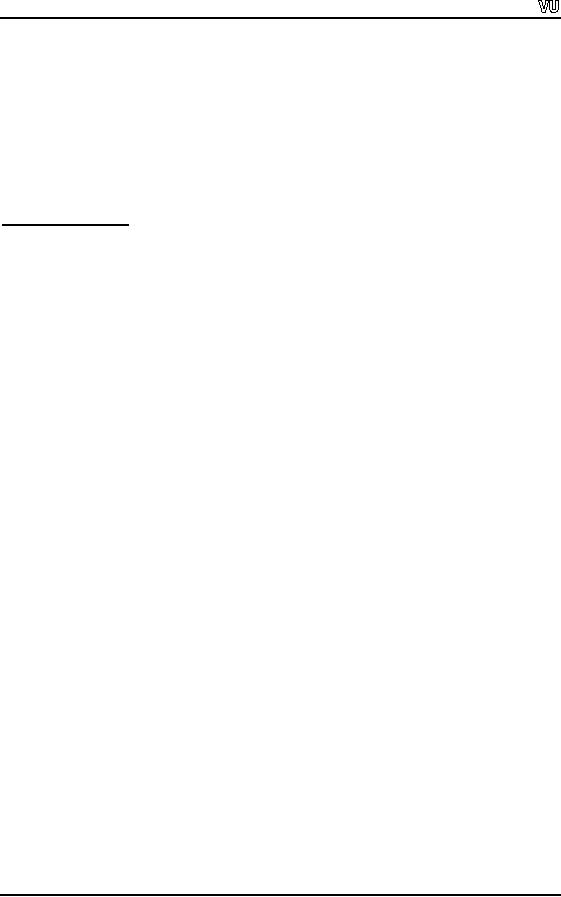
CS201
Introduction to Programming
Lecture
Handout
Introduction
to Programming
Lecture
No. 36
Reading
Material
Deitel
& Deitel - C++ How to
Program
Chapter.
11
11.6,
11.7
Summary
37)
Stream
Manipulations
38)
Manipulators
39)
Non
Parameterized Manipulators
40)
Parameterized
Manipulators
41)
Format
State Slags
42)
Formatting
Manipulation
43)
Showing
the Base
44)
Scientific
representation
45)
Exercise
Stream
Manipulations
After
having a thorough look into
the properties and object
definition of I/O streams,
we
will
discuss their manipulations. Here, there
is need of some header files
to include in our
program
the way, cin
and
cout
are
used.
We
include iostream.h
and
fstream.h
while
using
file
manipulations. In case of manipulation of
the I/O streams, the
header file with
the
name of
iomanip.h
is
included.
It is
required to be included whenever there is
need of
employing
manipulators.
As
discussed earlier, we can determine
the state of a stream. The
states of the stream
can
be
determined. For example, in case of
cin,
we
can check where the end of
file comes.
For
state- checking, these stream
objects have set of flags inside them.
These flags can be
considered
as an integer or long integer.
The bit position of these
integers specifies
some
specific
state. There is a bit for
the end of file to test. It
can be written as
under:
cin.eof()
;
Page
458
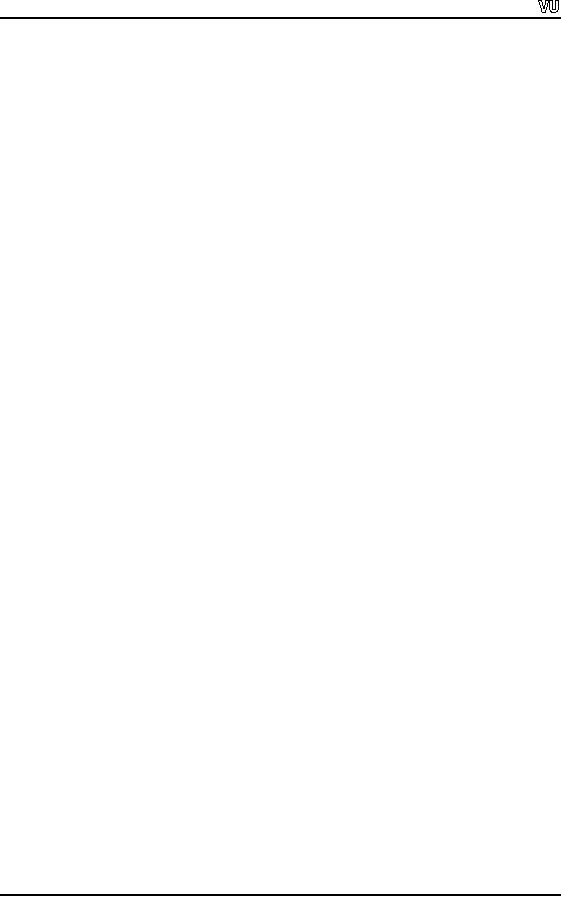
CS201
Introduction to Programming
It will
return the state of end of
file. The bit will be
set if the file comes to an
end.
Similarly,
there is a fail
bit.
This bit determines whether an
operation has failed or
not.
For
example, an operation could be failed due
to a formatting error. The
statement
cin.fail; will
return the value of the
fail
bit. As
this statement returns a
value, we can use
it in an
`if statement' and can
recover the error. Then
there is a bad
bit.
This
bit states that
data
has lost. The presence of
this bit means that
some data has lost during
I/O operation.
So we can
check it in the following
manner.
cin.bad();
It can be
used in parentheses as a function
call that will allow us to
check whether the
operation
failed or successful. Similarly we
can also check for'
good',
that is a
bit
showing
that everything is good. This
bit will be set if fail
and
bad
bits
are not set. We
can
check this bit as cin.good
;
and can find out whether
the input operation
was
successful.
If some bit like bad
has
been set, there should
also be a mechanism to clear
it.
For this,
we have
cin.clear()
;
as a member
function for these objects.
This will reset the
bits to their normal good
state.
This is a
part of checking input
stream.
Manipulators
Whenever
carrying out some
formatting, we will want
that the streams can
manipulate
and a
number should be displayed in a particular
format. We have stream
manipulators
for doing
this. The manipulators are like something
that can be inserted into
stream,
effecting a
change in the behavior. For
example, if we have a floating point
number, say
pi (л), and
have written it as float
pi = 3.1415926 ; Mow
there is need of printing
the
value of
pi up to two decimal places i.e.
3.14 . This is a formatting
functionality. For this,
we have a
manipulator
that
tells about width and
number of decimal points of a
number
being
printed. Some manipulators are parameter
less. We simply use the
name of the
manipulator
that works. For example, we
have been using endl, which
is actually a
manipulator,
not data. When we write cout
<< endl ; a new
line is output
besides
flushing
the buffer. Actually, it manipulates
the output stream. Similarly
flush
was
a
manipulator
for which we could write
cout
<< flush that
means flushing the
output
buffer. So it
manipulates the output.
A second
type of manipulators takes some argument.
It can be described with the
help of
an example.
Suppose we want to print the
value of pi up to two decimal
places. For this
purpose,
there should be some method
so that we can provide the
number i.e. two (2) up
to which
we want the decimal places.
This is sent as a parameter in
the manipulators.
Thus we
have the parameterized
manipulators.
Let's
have a look on what streams
do for us. We know that
streams are like
ordered
sequence
of bytes and connect two
things i.e., a source and a destination. In
the middle,
the
stream does some conversion.
So it may take some binary
representation of some
information
and convert it into human
readable characters. It may
also take characters
Page
459
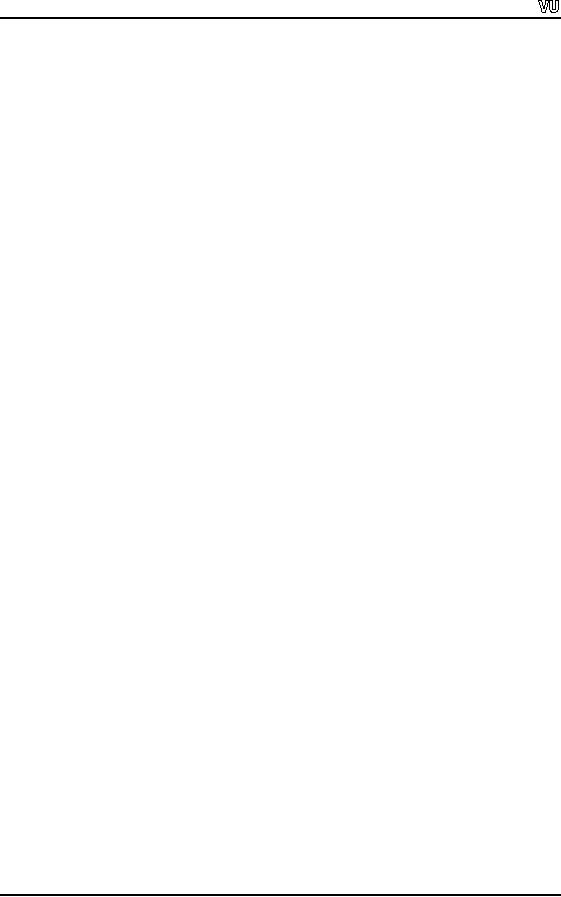
CS201
Introduction to Programming
and
convert them into an internal
representation of data. With in
the conversion of
data,
we can do
some other things. For example,
you might have seen
that if a system prints
computerized
cheques, it puts some
special characters with the
numbers. If there is a
cheque
for four thousand rupees,
this amount would be written
on it as ****4000.00. The
idea of
printing * before the amount
is that no body could insert some
number before the
actual
amount to change it. As we
don't want that somebody
has increased the amount
on
the
cheque from Rs 4000 to Rs
14000.The printing of * before
the amount is a
manipulation
that we can do with input or
output objects. We can also
tell the width for
a
number to
be printed. So there are many conversions
that we can do. We can
use fill
characters
like * as mentioned in the example of
cheque printing. To accomplish all
these
tasks,
there are different methods.
So it becomes a little confusing that
the same work is
being
done through 2-3 different
methods. Some are inline
manipulators like endl.
We
can
use it with <<
and
write inline as cout
<< endl ; The
same work could be done
with
the
flush
method.
We could also write cout.flush
;
Thus it is confusing that there is
an
inline
manipulator and a function for
the same work.
Non-Parameterized
Manipulators
Let's
start with simple manipulators. We
have been dealing with
numbers like
integers,
floats
etc for input and
out put. We know that
our number representations
are associated
with
some base. In daily life,
the numbers of base 10 are
used in arithmetic. When we
see
4000
written on a cheque, we understand
that it is four thousands
written in the
decimal
number
system (base 10). But in
the computer world, many systems
are used for
number
representation
that includes binary (base 2), octal
(base 8), decimal (base
10) and
hexadecimal
(base 16) systems. A simple
justification for the use of
these different
systems
is that computers internally
run on bits and bytes. A
byte consists of eight bits.
Now if we
look at the values that
can be in eight bits. 256 values
(from 0 to 255 ) can
be
stored in
eight bits. Now consider four
bits and think what is
the highest number that
we
can
store in four bits. We know
that the highest value in a
particular number of bits
can
be
determined by the formula 2n - 1 (where n is the number of bits). So
the highest value
that
can be stored in four bits
will be 24
- 1 i.e. 15.
Thus the highest value, we
can store in
four
bits is 15 but the number of
different values that can be
stored will be 2n i.e.
16
including
zero. Thus we see that
while taking half of a byte
i.e. four bits, 16 (which is
the
base of
hexadecimal system) different numbers
can be stored in these four
bits. It means
that
there is some relationship between
the numbers that have a
base of some power of
two. So
they can easily be manipulated as bit
format. Thus four bits
are hex. What about
eight
(octal)? If we have three bits,
then it is 23
= 8, which is
the base of octal
system.
Thus, we
can use three bits
for octal arithmetic.
We can
use manipulators to convert these
numbers from one base to
the other. The
manipulators
used for this purpose,
can be used with cin
and
cout. These
are non-
parameterized
manipulators. So if we say the things
like int
i = 10 ; Here i
has
the
decimal
value 10. We write cout
<< i ; and 10
is being displayed on the screen. If
we
want to
display it in octal form, we can
use a manipulator here. If we
write
cout
<< oct << i ;
Page
460
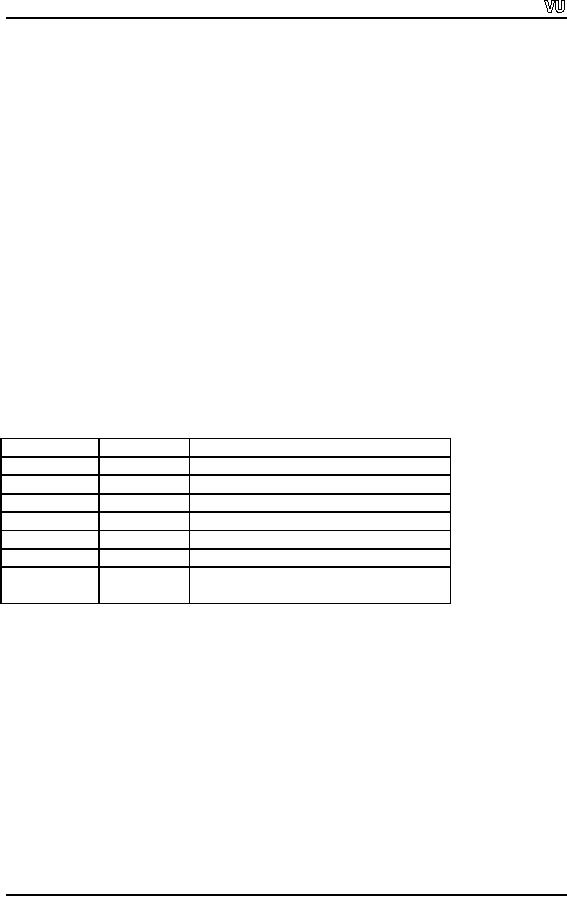
CS201
Introduction to Programming
it will
display the octal value of i (10)
which is 12. This manipulator
converts the
decimal
number into an octal number
before displaying it. So the
octal representation of
10 which
is 12, will be displayed on the
screen. Similarly if we
write
cout
<< hex << i ;
Here hex
stands for the hexadecimal.
hex
is
the manipulator that goes
into the out
put
stream
before i
and
manipulates the stream by converting
the decimal number into
a
hexadecimal
number. As a result, the hexadecimal
value of 10 is displayed on the
screen.
If we
have a number in octal or hexadecimal
system , it can be converted
into a decimal
number by
putting the dec
manipulator in
the stream like
cout
<< dec << i ;
These
(oct, hex and dec) are
very simple inline manipulators
without any argument.
There is
also a manipulator for white
space. The white space
has a special meaning. It is
a
delimiter
that separates two numbers
(or words). In cin
and
cout, the
white space acts as a
delimiter.
If we want that it should
not act as a delimiter, it
can used as a ws
manipulator.
This
manipulators skips white space. This
manipulator takes no argument. This
ws
manipulator is
sometime useful but not all
the times. The following
table shows the
non-
parameterized
manipulators and their description.
Manipulator
Domain
Effect
dec
In /
Out
Use
decimal conversion
base
hex
In /
Out
Use hexadecimal
conversion base
oct
In /
Out
Use octal
conversion base
endl
Output
Inserts a
new line and flush
the stream
ends
Output
Terminate a string
with NULL
flush
Output
Flush
the stream
ws
Input
Skip
leading whitespace for the
next
string extraction
only
The
base becomes important while
doing programming of scientific programs.
We may
want
that there is the hexadecimal
presentation of a number. We have
discussed the
justification
of using hexadecimal or octal numbers,
which is that they match
with bits.
Here is
another justification for
it. Nowadays, computers are
just like a box with a
button
in front
of them. A reset button is also included
with the main power button.
While seeing
the
pictures or in actual Miniframe
and mainframe computers, you
will notice that
there
is a row
of switches in front of them. So there
are many switches in front of
these
computers
that we manipulate. These switches are
normally setting directly
the values of
registers
inside the computer. So you can
set the value of register as
101011 etc by
switching
on and off the switches. We
can do that to start a computer or
signaling
something to computer
and so on. There are a
lot of switches in front of those
computers
ranging
between 8 to 16. You have to
simply remember what is the
value to start the
computer.
Similarly, it will require
the reading the combinations of switches
from the
paper to
turn on the computer. This
combination tells you which
switch should be on
and
Page
461
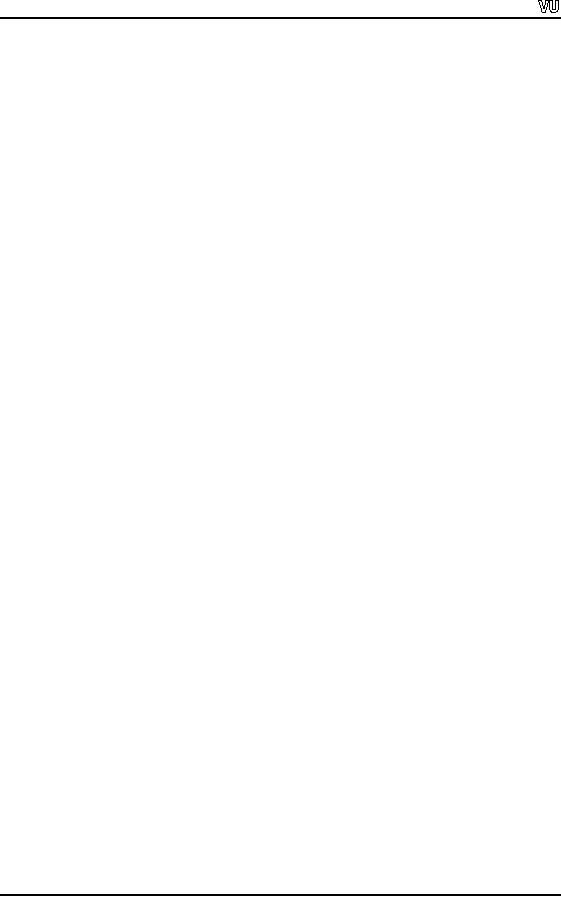
CS201
Introduction to Programming
which
should be off. As a human
being instead of remembering the
whole pattern like
10110000111
etc, it could be easy to remember it as
7FF. Here we are dealing with
HEX
numbers.
For the digit 7, we need
four bits. In other words,
there is need to set
four
switches.
The pattern of 7 is 0111. So we
set 7 with this combination.
For F, all the
four
bits
should be on as 1111 and so
on. Thinking octal and hexadecimals
straight away maps
to the
bits. It takes a little bit of
practice to effectively map on
the switches. On the
other
hand,
decimal does not map to
those bits. What will be its
octal number in case of
decimal
number 52.? You have to
calculate this. What is the binary
representation of 52?
Again
you have to calculate. There
are a lot of things which you
have to calculate. On
the
hand, if
we say 7ABC in case of HEX,
we are mapping the number straight
away on four
bits. In octal
system, we map the number on
three bits. A is ten so it will be
1010 so you
can
quickly set the switches. It
may not be relevant today.
But when you are
working
with
big computers, it will
become quite relevant. There
are many times when we have
to
manipulate
binary data using mechanical
device while thinking in hexadecimal
and octal
terms. In
the language, you have
the facility to set the
base. You can use
setbase(), hex,
oct,
dec and
setf. There
are many ways of doing the
same thing. Programmers
write these
languages.
Therefore they make this
facility available in the language as
built in.
Parameterized
Manipulators
Suppose
we want to print the number
10 within a particular width. Normally
the numbers
are
written right justified. In
case of no action on our part,
cout
displays a
number left
justified
and in the space required by
the number. If we want that
all numbers should be
displayed
within the same particular
width, then the space
for the larger number
has to be
used.
Let's say this number is of
four digits. Now we want
that there should be such
a
manipulator in
the output that prints every
number in a space of four
digits. We have a
manipulator
setw
(a
short for set width), it
takes as an argument the
width in number of
spaces.
So to print our numbers in
four spaces we write
cout
<< setw(4) << number ;
When printed,
this number gets a space of
four digits. And this
will be printed in that
space
with right justification. By
employing this mechanism, we can print
values in a
column
(one value below the
other) very neat and
clean.
Now in
the example of printing a cheque, we
want that the empty
space should be
filled
with
some character. This is
required to stop somebody to manipulate
the printed figure.
To fill
the empty space, there is
need of manipulator setfill. We can
write this
manipulator
with cout
as
the following
cout
<< setfill (character) ;
where the
character
is a
single character written in single
quotes. Usually, in
cheque
printing,
the character * is used to
fill the empty spaces. We
can use any character
for
example, 0 or x.
The filling character has
significance only if we have used
setw
manipulator.
Suppose, we are going to print a
cheque with amount in 10
spaces. If the
amount is
not of 10 digits, the empty
space will be filled with *.
Thus the usage of setfill
Page
462
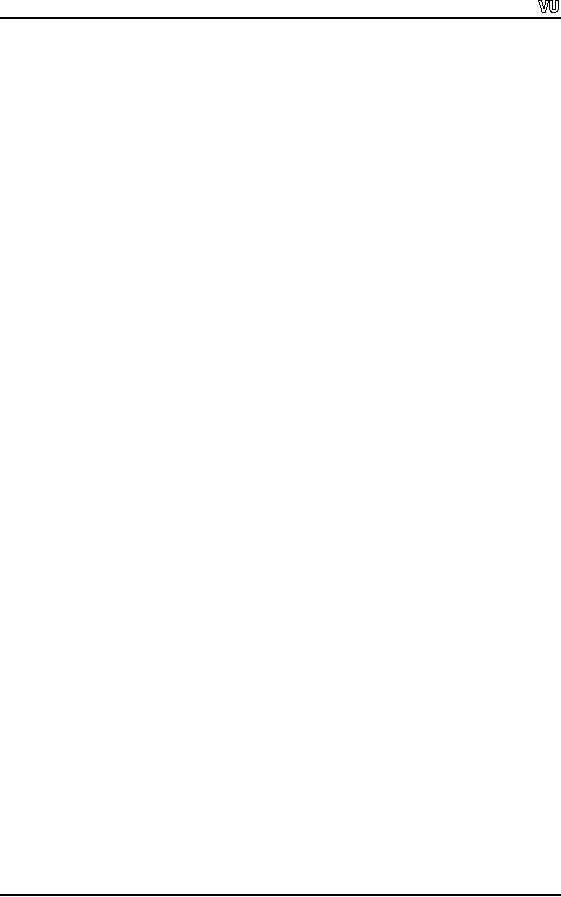
CS201
Introduction to Programming
is there
where we use setw
for
printing a number in a specific
width. So if we want to
print an
amount in 10 spaces and want
to fill the empty spaces
with *, it can be written
as
under.
cout
<< setfill(*) << setw(10) << amount
;
Thus
the manipulators can also be of
cascading nature. The stream
insertion operator
(<<)
is overloaded and every
overload of it returns a reference to
the cout
object
itself.
This
means that while working
from left to right, first
the fill character will be
set
returning a
reference to cout
.
Later, its width will be
set to 10 character and
return a
reference
to cout
again.
Finally, the amount will be
displayed in the required
format.
Thus, we
have manipulated the stream in
two ways. Example of a pipe
with two bends
can help
it understand further. Now whatever
figure goes into it,
its width and the
fill
character
is set and things are displayed in
the space of 10 characters. If we
want to print
an amount
of Rs 4000 on the cheque, it
will be printed on the cheque as
******4000.
Thus, we
have two manipulators, setw
and
setfill
which
are used with cout.
Let's
further discuss the same
example of cheque. In real
world, if we look at a computer
printed
cheque , the amount is printed
with a decimal point like
4000.00 even if there
is
no digit
after decimal point. We
never see any amount
like 4000.123, as all the
currencies
have
two- digit fractional part.
Thus, we examine that the
fractional part has
been
restricted
to two decimal places. The
decimal digits can be
restricted to any number.
We
have a
manipulator for this purpose.
The manipulator used for
this purpose is
setprecision. This is
a parameterized manipulator. It takes an
integer number as an
argument
and restrict the precision to that
number. If we write
cout
<< setprecision (2) << float
number ;
The
above statement will display
the given float number with
two decimal places. If
we
have
the value of pi stored in a variable,
say pi, of type
float with a value of
3.1415926
and
want to print this value
with two decimal places.
Here, manipulator setprecision
can
be used.
It can be written as
under.
cout
<< setprecision (2) << pi ;
This
will print the value of
pi
with
two decimal places.
Now
think about it and write on
the discussion board that whether the
value of pi is
rounded
or truncated when we print it with
setprecision manipulator. What
will be the
value
of pi with five decimal
places and with four
decimal places? Will the
last digit be
rounded
or the remaining numbers
will be truncated?
At this
point, we may come across
some confusion. We have learned
the inline
manipulators
that are parameter less.
For these, we simply write
cout
<< hex <<
number;
which
displays the number in hexadecimal form.
There is also a
parameterized
manipulator
that performs the same task.
This manipulator is setbase. It
takes the base of
the
system (base, to which we
want to format the number) as an
argument. Instead of
Page
463
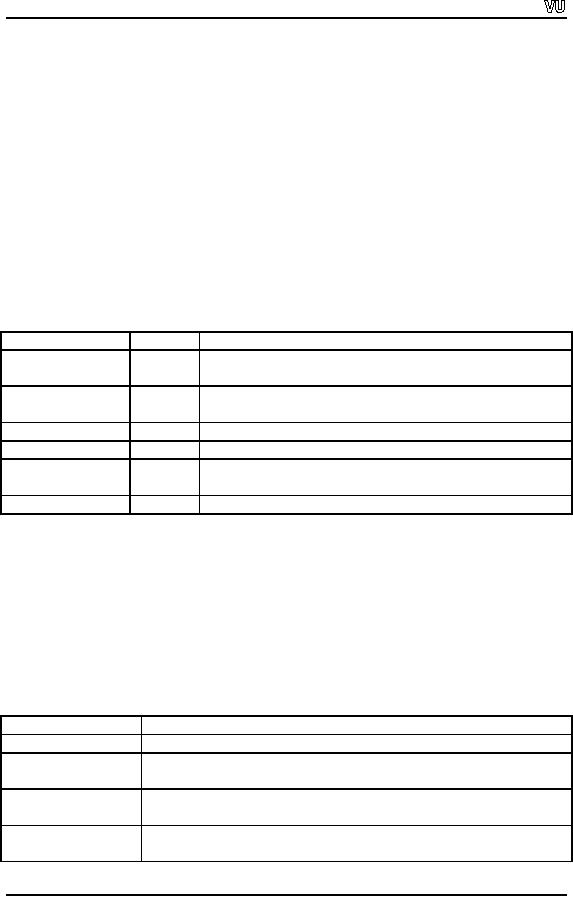
CS201
Introduction to Programming
using
oct,
dec and
hex
manipulators, we
can use the setbase
manipulator
with the
respective
base as an argument. So instead of
writing
cout
<< oct << number ;
we can
write
cout
<< setbase (8) << number
;
The
above two statements are
equivalent in the way for having
the same results. It is
a
matter of
style used by one of these
manipulators. We can use either
one of these,
producing a
similar effect. The cout
<< setbase(8) means
the next number will be
printed
in the
base 8. Similarly cout
<< setbase(16) means
the next number will be
printed in
hexadecimal
(base 16) form. Here a point
to note is that setbase
(0) is the
same as
setbase(10).
Following
is the table, in which the
parameterized manipulators with their effect
are
listed.
Manipulator
Domain
Effect
resetioflags(long
In /
Out
Clear
flags specified in f
f)
setbase
(int b)
In /
Out
Set
numeric conversion base to b (b
may be 0, 8, 10 or
16)
setfill
(int c)
Output
Set
fill character to c
setiosflags(long
f)
In /
Out
St flags specified in
f
setprecision
(int
Output
Set
floating point precision to p
p)
setw
(int w)
Output
Set
field width to w
Format
State Flags
We have
discussed that there are
flags with the stream
objects. This set of flags is
used to
determine
the state of the stream.
The set includes good,
fail, eof etc
that tells the state
of
the
stream. There is also
another set of flags comprising
the ones for input/output
system
(ios). We
can use setioflag,
and
give it as an argument a long
number.
Different bit values
are
set in this number and
the flags are set according
to this. These flags are known
as
format
state flags and are shown in
the following table. These
flags can be controlled by
the
flags, setf
and
unsetf
member
functions.
Format
state flag
Description
ios::skipws
Skip
whitespace character on an input
stream.
ios::left
Left
justify output in a field, padding
characters appear to the
right
if
necessary.
ios::right
Right
justify output in a field, padding
characters appear to the
left
if
necessary.
ios::internal
Indicate
that a number's sign should be left
justified in a field
and
a number's magnitude
should be right justified in
that same field
Page
464
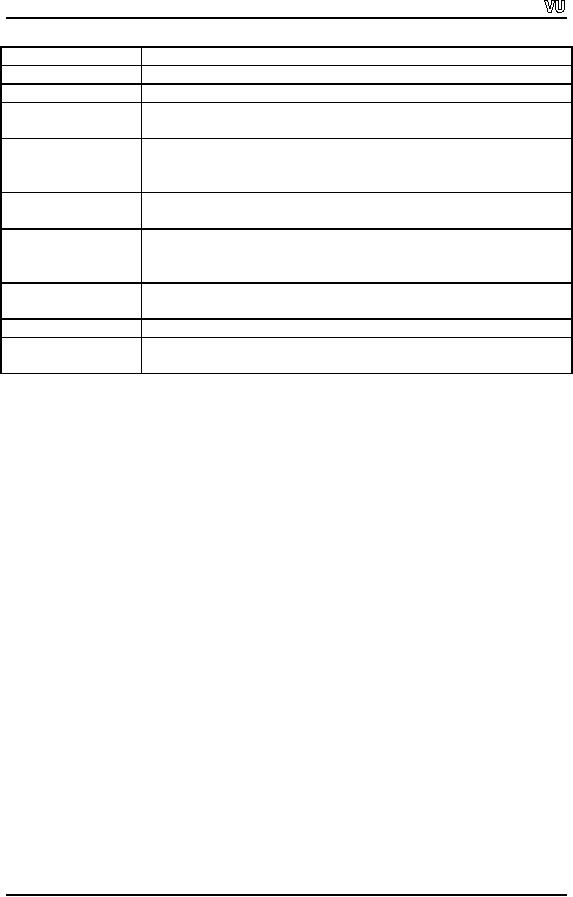
CS201
Introduction to Programming
(i.e.
padding characters appear
between the sign and the
number).
ios::dec
Specify
that integers should be
treated as decimal (base 10)
values.
ios::oct
Specify
that integers should be
treated as octal (base 8)
values.
ios::hex
Specify
that integers should be
treated as hexadecimal (base
16)
values.
ios::showbase
Specify
that the base of a number is
to be output ahead of the
number(a
leading 0 for octals, a leading 0x or 0X
for
hexadecimals).
ios::showpoint
Specify
that floating-point numbers
should be output with a
decimal
point. This is normally used
with ios::fixed.
ios::uppercase
Specify
that uppercase letters (i.e X
and A through F) should
be
used in
the hexadecimal integers and
the uppercase E in
scientific
notation.
ios::showpos
Specify
that positive and negative
numbers should be preceded
by
a + or - sign,
respectively.
ios::scientific
Specify
output of a floating-point value in
scientific notation.
ios::fixed
Specify
output of a floating-point value in fixed
point notation
with a
specific number of digits to
the right of the decimal
point.
Let's
talk about more complicated things. We
discussed a parameterized
manipulator
setw
that
sets the width to print in
the output. There is an alternative for
it i.e. the member
function,
called `width()'. This
function also takes the
same parameter and an
integer, in
which
width the things are to
display or read. This
function applies to both
input and
output
stream. For this, we write
cin.width
(7). This
will create a format field
of the width
of 7
characters for an input. Now
we write cout.width
(10) ; this
will set the width
of
output
field to 10. With it,
the next number to be printed
will be printed in 10 spaces.
Thus
setw, inline
manipulator has the alternative function
cin.width
and
cout.width
with
single
argument.
It equally
applies to the setprecision. This is
the parameterized, inline- manipulator
that
sets
the places after the
decimal point. There is a member
function as well in
these
objects
that is precision. The
setprecision
is an
inline manipulator, used along
with
stream
insertion (<<). If we want to do
the same thing with a
function call,
cout.precision(2)
is
written. It has the same
effect as that of cout
<< setprecision (2).
Thus we
have different ways of doing
things.
We have
used setfill
manipulator. Here is
another member- function i.e. cout.fill.
The
behavior
of this function is exactly
the same. We simply write
cout.fill(`*')
;
identical to
cout
<< setfill(`*'). The
filling character is mostly
used whenever we use
financial
transactions
but not necessarily. We can
also use zero to fill
the space.
So fill
and
setfill, width
and
setw, precision
and
setprecision
and
almost for every
inline
manipulator,
there are member functions that
can be called with these
streams.
The
member functions are defined in iostream.h.
However, the
manipulators are defined
in iomanip.h.
Normally we have been
including iostream.h
in
our programs to utilize
the
member functions
easily. But inclusion of a header
file `iomanip.h file is must
for the use
of
manipulators.
Page
465
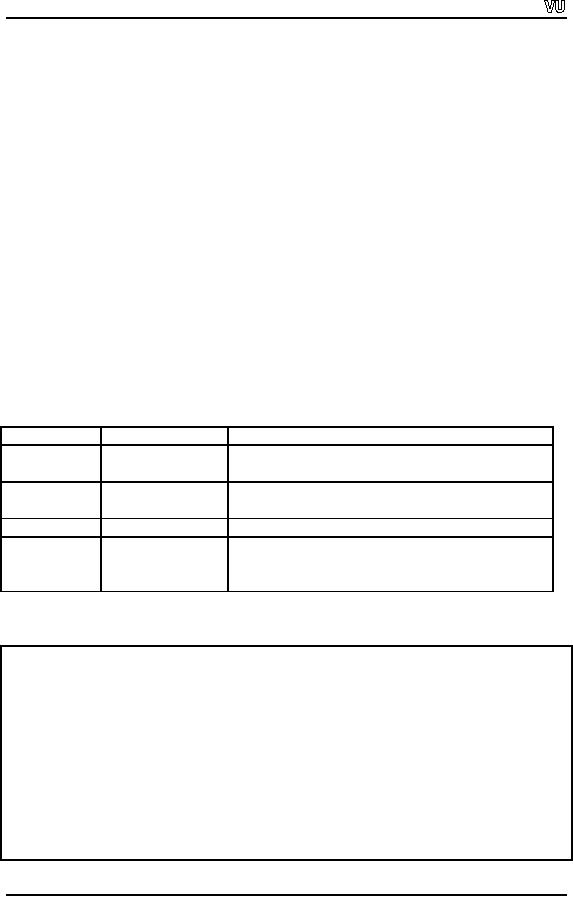
CS201
Introduction to Programming
We should
keep in mind that when we
can write inline manipulators in
the following
fashion.
cout
<< setw (7) << i ;
And in
the next line we
write
cout
<< j ;
Here the
setw
manipulator
will apply to i
only
and not after that to
j. This
means that
inline
manipulators apply only to the
very next piece of data i.e.
output. It does not
apply
to
subsequent output
operations.
Formatting
Manipulation
We can
adjust the output to left
side, right side or in the
center. For this purpose, we
have
a member
function of the object whose syntax is as
under:
cout.setf(ios::
flag, ios::
adjust field)
The
setf
is a
short for set flag.
The flags are long integers,
also the part of the
objects.
They
are the bit positions,
representing something. Here we can set
these flags. The flags
of adjustfield
are
set with values i.e. left,
right, left | right and
internal. The description of
these is
as follows.
Value of
flag
Meaning
Description
left
Left-justify
Justifies
the output to left
side
output
right
Right-justify
Justifies
the output to right
side
output
left |
right
Center
output
Centralized
the output
internal
Insert
padding
Places
padding between signs or
base indicator
and
the first digit of a number.
This applies only
to number
values and not to character
array.
Following
is the code of a program that
shows the effects of these
manipulators.
//This
program demonstrate the
justified output
#include
<iomanip.h>
#include
<iostream.h>
void
main()
{
int i =
-1234;
cout.setf(ios::left,
ios::adjustfield);
cout
<< "|" << setw(12) << i << "|"
<< endl;
cout.setf(ios::right,
ios::adjustfield);
cout
<< "|" << setw(12) << i << "|"
<< endl;
Page
466
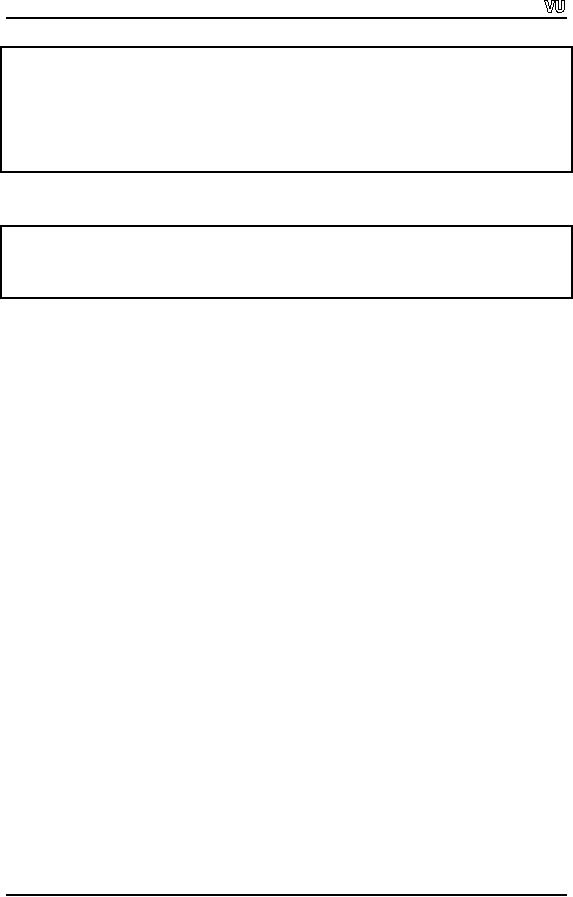
CS201
Introduction to Programming
cout.setf(ios::internal,
ios::adjustfield);
cout
<< "|" << setw(12) << i << "|"
<< endl;
cout.setf(ios::left |
ios::right,
ios::adjustfield);
cout
<< "|" << setw(12) << i << "|"
<< endl;
cin
>> i ;
}
Following
is the output of the above
program.
|-1234
|
|
-1234|
|-
1234|
|
-1234|
We have
discussed two types of manipulators
for base, the parameter
less manipulator in
which we
look for oct, dec
and
hex. On the
other hand, there is a
parameterized
manipulator
setbase
which
takes an integer to set the
base. It uses 0 or 10 for
decimal, 8
for octal
and 16 for hexadecimal
notations.
Now we
have a generic function setf
that
sets the flags. We can write
something like
cout.setf(ios::hex)
The
hex is defined in ios. It has
the same effect. It sets the
output stream, in this
case
cout, to use
hexadecimal display for integers. So it is
the third way to accomplish
the
same
task. The use of these
ways is a matter of programming
style.
Showing
the base
Now
there should be someway to know
which base has the
number output by the
programmer.
Suppose we have a number
7ABC, then it be nothing but
hexadecimal.
What
will be the nature of 7FF.
It is hexadecimal. However, the number 77
(seven seven)
is a
valid number in all of
different basis. We have a
built-in facility showbase. It is
a
flag. We
can set the showbase
for
output stream that will
manipulate the number
before
displaying
it. If you have the
showbase
falg on
(by default it is off), a number
will be
displayed
with special notations. The
setf
function
is used to set the flag
for the base
field.
Its
syntax is as under:
cout.setf(ios::base,
ios::basefield);
Here base
has three values i.e. oct,
dec and hex for octal,
decimal and hexadecimal
systems
respectively. If the basefield is set to
oct
(octal), it
will display the number
with a
preceding
zero. It shows that the
number is in octal base. If the
basefield is set to hex
(hexadecimal),
the number will be displayed
with a preceding notation 0x.
The number
will be
displayed as such if the basefield is
set to dec
(decimal).
If there is a number,
say
77, it
will be difficult to say
that it is in octal, decimal or hexadecimal
base, a valid
number
for all the three
systems. However, if we output it
with the use of showbase,
it
will be
easy to understand in which
base the output number is
being represented.
The
Page
467
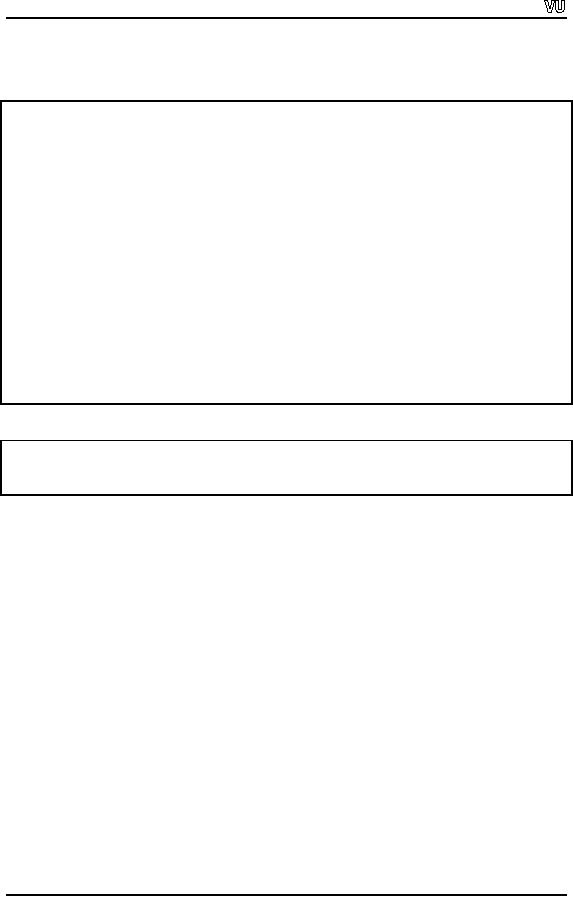
CS201
Introduction to Programming
following
example, demonstrates this by showing
the number (77) along with
the base
notation.
/* This
program demonstrate the use
of show base.
It displays a
number in hex, oct and decimal
form.
*/
#include
<iostream.h>
void
main()
{
int x =
77;
cout.setf(ios::showbase);
cout.setf(ios::oct,ios::basefield);
//base is 8
cout
<< x << '\n';
//displays
number with octal notation
cout.setf(ios::hex,ios::basefield);
//base is 16
cout
<< x << '\n';
//displays
number with hexadecimal notation
cout.setf(ios::dec,ios::basefield);
cout
<< x << '\n';
}
Following
is the output of the
program.
0115
0x4d
77
Scientific
Representation
When the
numbers get bigger, it
becomes difficult to write
and read in digits format.
For
example,
one million will be written
as 1000000. Similarly hundred
million will be
100000000
(one with eight zeros). How
will we display the number
which is of 20-digit
long?
For this, we use scientific notation. To
do it, a manipulator ios::
scientific can
be
used. If
the flag in setf
to
the scientific
is
set, it can be written
as
cout.setf(ios::scientific,
ios::floatfield) ;
Then
the floating point numbers
will be displayed in scientific notation. A
number in
scientific
is like 1.946000e+009. So we can
set the state of output
stream to use
scientific
notation
for outputting a number.
To do the
scientific notation off and
restore the default notation, we set
the flag in setf
function
to fixed
(which is
a short for fixed point
notation). This can be written
as
cout.setf(ios::fixed,
ios::floatfield) ;
Page
468
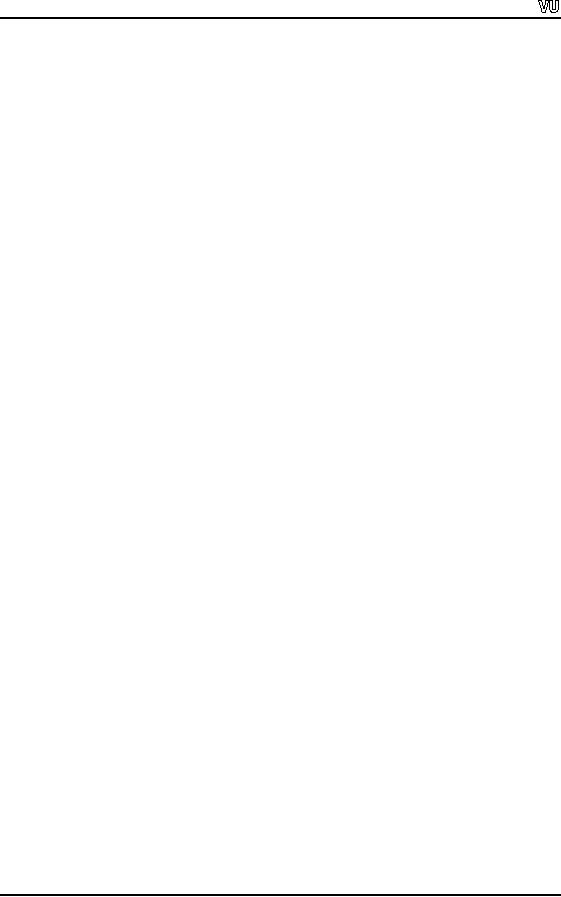
CS201
Introduction to Programming
Uppercase/Lowercase
Control
Similarly,
we have a manipulator ios::uppercase. While
using this manipulator, the e in
scientific
notation is written in uppercase i.e. E. If we
are using hexadecimal numbers,
then
the characters of it will be displayed in
uppercase letters as A, B, C, D, E and
F.
Exercise
�
We have
been using matrices i.e. a two
dimensional array. As an exercise, try
to
print
out a matrix of three rows
and three columns, in such a
way that it should be
nicely
formatted. The numbers should be aligned
as we write it in a neat and
clean
way on
the paper. You can
use the symbol | at the
start and end of each
row as we
don't
have a so big square bracket
to put around three rows. To
be more elegant to
print a
matrix, we can use a proper
graphic symbol to put square
brackets around
the
matrix instead of using |
symbol. In the ASCII table,
there are many
symbols
that we
can use to print in our
programs. We have the
integer values of
these
symbols in
the table. Suppose you
have a value 135 of a
symbol. Now to print
this
symbol,
press the `alt' key and
keeping the key pressed
enter the integer value
i.e.
135
from the num pad of
the key board, release
the `alt' key. Now you
will see
that
symbol on the screen. For
the value 135, the
symbol is �. In programming, we
can
provide this symbol to be printed as a single
character in single quotes.
For
this, put
a single quote and then
enter the symbol in the
way stated above and
then
put
the single quote. It will be
written as `�'. Find out
proper symbols from
the
ASCII
table that can comprise to
put a square bracket around
the matrix.
�
Write
simple programs to demonstrate
the use of different manipulators
and
examine
their effects.
Page
469
Table of Contents:
- What is programming
- System Software, Application Software, C language
- C language: Variables, Data Types, Arithmetic Operators, Precedence of Operators
- C++: Examples of Expressions, Use of Operators
- Flow Charting, if/else structure, Logical Operators
- Repetition Structure (Loop), Overflow Condition, Infinite Loop, Properties of While loop, Flow Chart
- Do-While Statement, for Statement, Increment/decrement Operators
- Switch Statement, Break Statement, Continue Statement, Rules for structured Programming/Flow Charting
- Functions in C: Structure of a Function, Declaration and Definition of a Function
- Header Files, Scope of Identifiers, Functions, Call by Value, Call by Reference
- Arrays: Initialization of Arrays, Copying Arrays, Linear Search
- Character Arrays: Arrays Comparisonm, Sorting Arrays Searching arrays, Functions arrays, Multidimensional Arrays
- Array Manipulation, Real World Problem and Design Recipe
- Pointers: Declaration of Pointers, Bubble Sort Example, Pointers and Call By Reference
- Introduction, Relationship between Pointers and Arrays, Pointer Expressions and Arithmetic, Pointers Comparison, Pointer, String and Arrays
- Multi-dimensional Arrays, Pointers to Pointers, Command-line Arguments
- String Handling, String Manipulation Functions, Character Handling Functions, String Conversion Functions
- Files: Text File Handling, Output File Handling
- Sequential Access Files, Random Access Files, Setting the Position in a File, seekg() and tellg() Functions
- Structures, Declaration of a Structure, Initializing Structures, Functions and structures, Arrays of structures, sizeof operator
- Bit Manipulation Operators, AND Operator, OR Operator, Exclusive OR Operator, NOT Operator Bit Flags Masking Unsigned Integers
- Bitwise Manipulation and Assignment Operator, Programming Constructs
- Pre-processor, include directive, define directive, Other Preprocessor Directives, Macros
- Dynamic Memory Allocation, calloc, malloc, realloc Function, Dangling Pointers
- History of C/C++, Structured Programming, Default Function Arguments
- Classes and Objects, Structure of a class, Constructor
- Classes And Objects, Types of Constructors, Utility Functions, Destructors
- Memory Allocation in C++, Operator and Classes, Structures, Function in C++,
- Declaration of Friend Functions, Friend Classes
- Difference Between References and Pointers, Dangling References
- Operator Overloading, Non-member Operator Functions
- Overloading Minus Operator, Operators with Date Class, Unary Operators
- Assignment Operator, Self Assignmentm, Pointer, Conversions
- Dynamic Arrays of Objects, Overloading new and delete Operators
- Source and Destination of streams, Formatted Input and Output, Buffered Input/Output
- Stream Manipulations, Manipulators, Non Parameterized Manipulators, Formatting Manipulation
- Overloading Insertion and Extraction Operators
- User Defined Manipulator, Static keyword, Static Objects
- Pointers, References, Call by Value, Call by Reference, Dynamic Memory Allocation
- Advantages of Objects as Class Members, Structures as Class Members
- Overloading Template Functions, Template Functions and Objects
- Class Templates and Nontype Parameters, Templates and Static Members
- Matrices, Design Recipe, Problem Analysis, Design Issues and Class Interface
- Matrix Constructor, Matrix Class, Utility Functions of Matrix, Input, Transpose Function
- Operator Functions: Assignment, Addition, Plus-equal, Overloaded Plus, Minus, Multiplication, Insertion and Extraction